GKE - Google Kubernetes Engine
GKE Deployment and Administration
Monitoring and Logging Cloud Operations for GKE
In this guide, we’ll dive into the Cloud Operations Suite for Google Kubernetes Engine (GKE) using a construction-site analogy. Just as each contractor on a build site has a specialized role, monitoring and logging act as your supervisors and record-keepers—helping you track progress, detect issues early, and keep your cluster running smoothly.
Monitoring: Your Dedicated Supervisor
Monitoring in Cloud Operations Suite for GKE is like having a dedicated supervisor on-site. It collects, analyzes, and visualizes data about your cluster’s performance, health, and resource usage. With real-time visibility, you can spot anomalies or potential problems before they escalate.
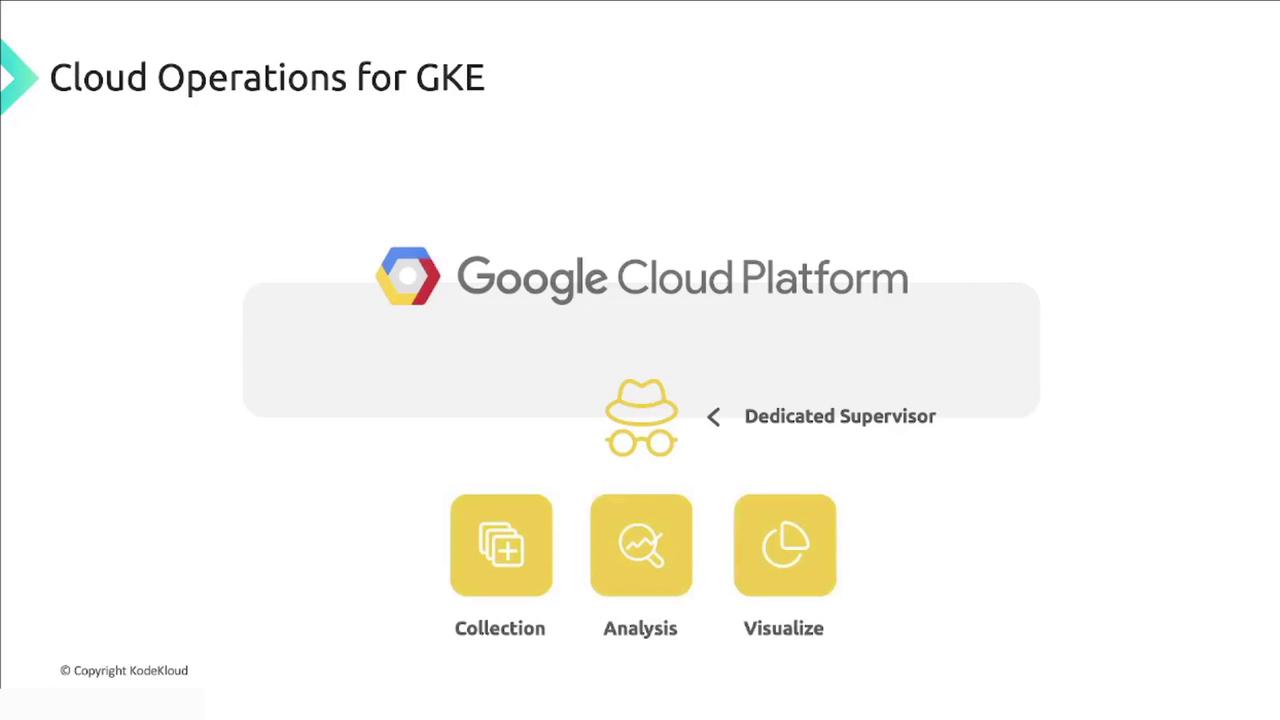
Key metrics you can track include:
- CPU and memory utilization
- Network traffic (ingress/egress)
- Application-level statistics (request rates, error rates)

GKE monitoring provides insight into:
- Node health and resource pressure
- Pod performance and status
- Network connectivity and latency
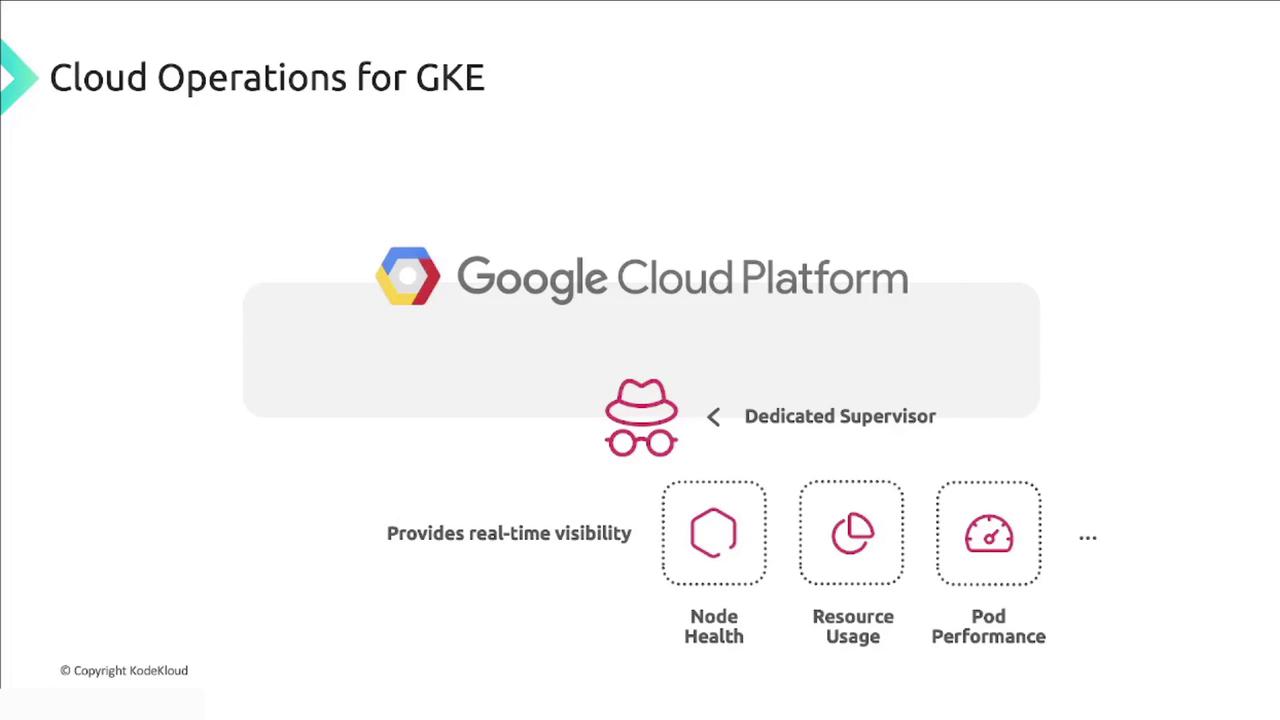
By continuously analyzing these metrics, you can detect issues such as CPU spikes, memory exhaustion, or network bottlenecks before they impact your applications.
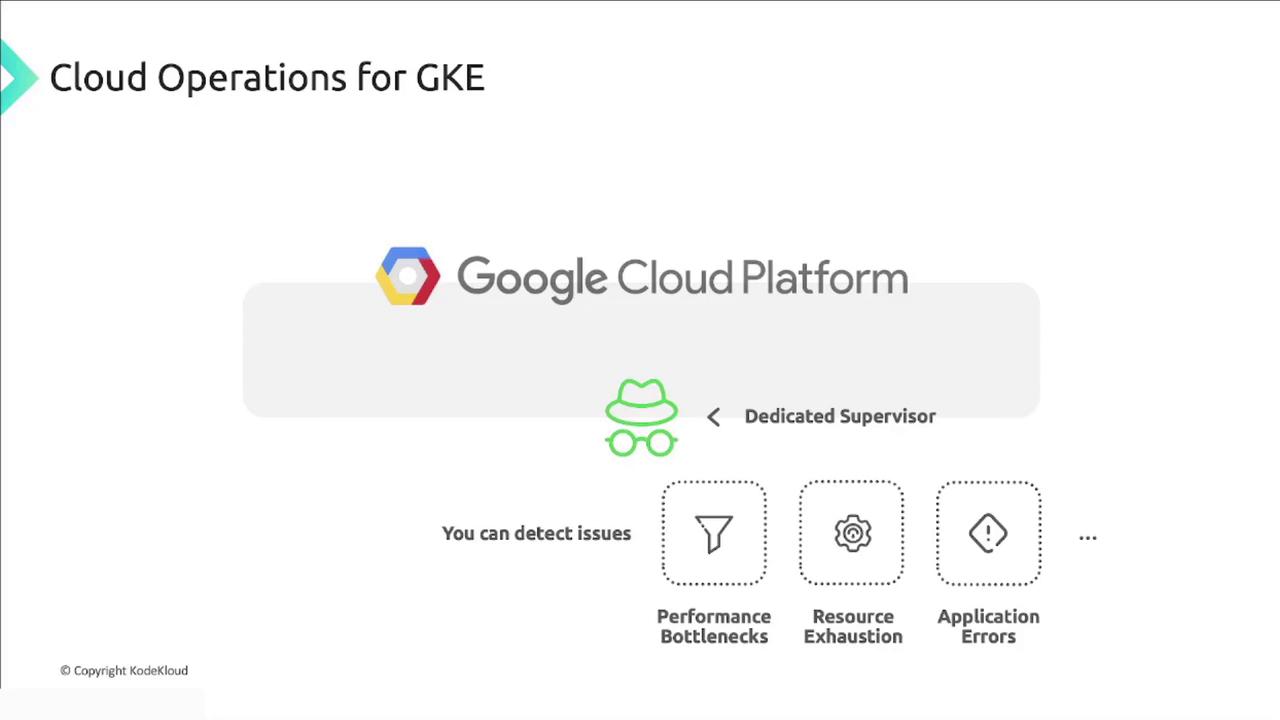
Logging: Your Detailed Record
Logging acts like a comprehensive site logbook—capturing every event, error, and warning generated by your GKE cluster, containers, applications, and services. These logs form a chronological record essential for troubleshooting, auditing, and understanding system behavior.
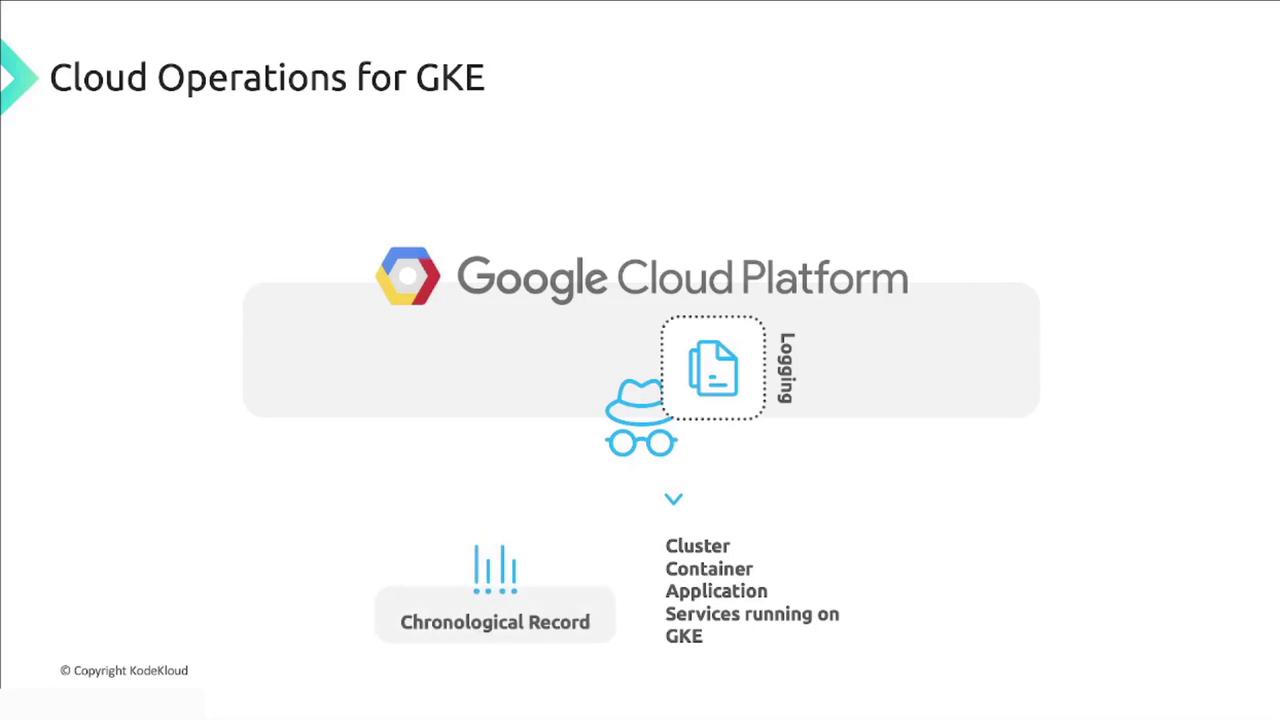
Use cases for log analysis:
- Trace request flows across microservices
- Pinpoint root causes during incidents
- Audit changes and security events
Note
Leverage log-based metrics to create custom dashboards and alerts for application-specific events.
Seamless Integrations and Defaults
When you provision a new GKE cluster on Google Cloud, Cloud Monitoring and Cloud Logging are enabled by default—providing Kubernetes-native observability out of the box. You can fine-tune which logs and metrics are ingested, ensuring you capture only what you need.
Warning
High log and metric retention can increase costs. Use log exclusions and metric filters to manage your budget.
GKE also integrates with Google Cloud Managed Service for Prometheus. This allows you to ingest, monitor, and alert on Prometheus metrics at scale—without managing your own servers.
| Integration | Purpose | Benefit |
|---|---|---|
| Cloud Monitoring | Collects cluster & pod metrics | Real-time dashboards and alerting |
| Cloud Logging | Aggregates logs from all sources | Centralized search, analysis, and archive |
| Managed Service for Prometheus | Ingests Prometheus metrics | Scalable monitoring without self-hosted servers |
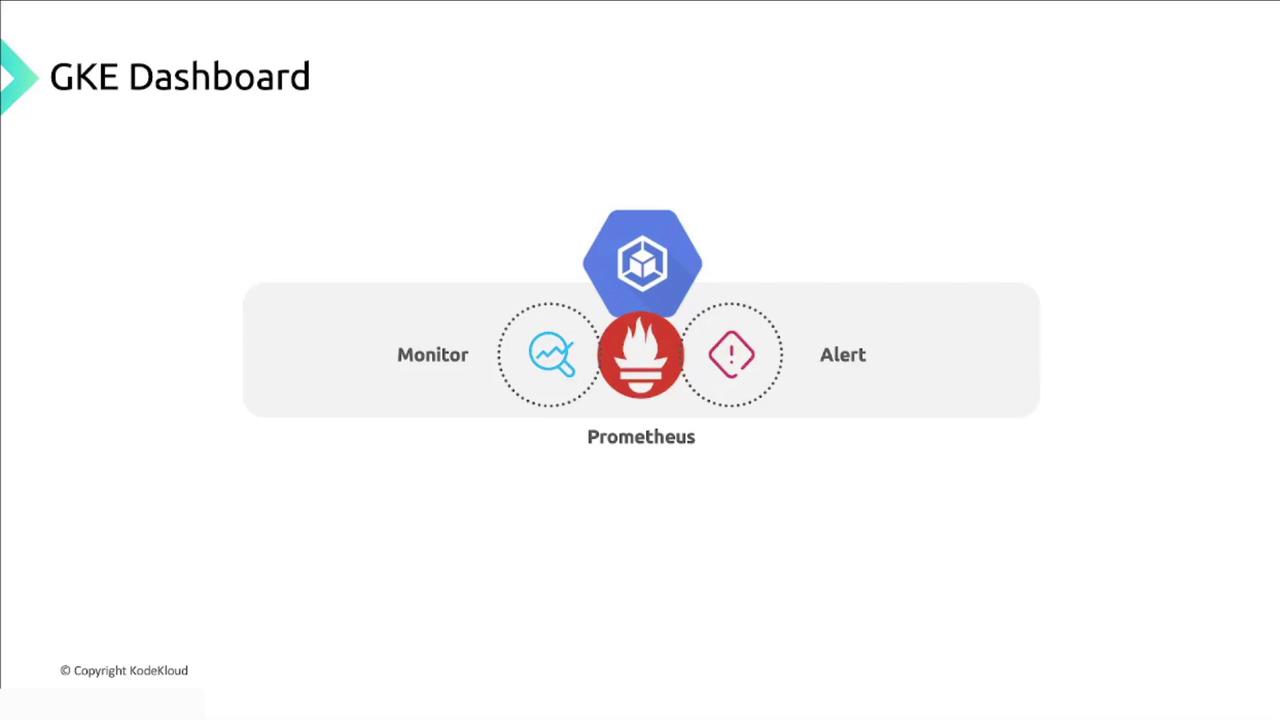
For detailed installation and configuration steps, refer to the course materials or the official documentation below.
Links and References
Watch Video
Watch video content